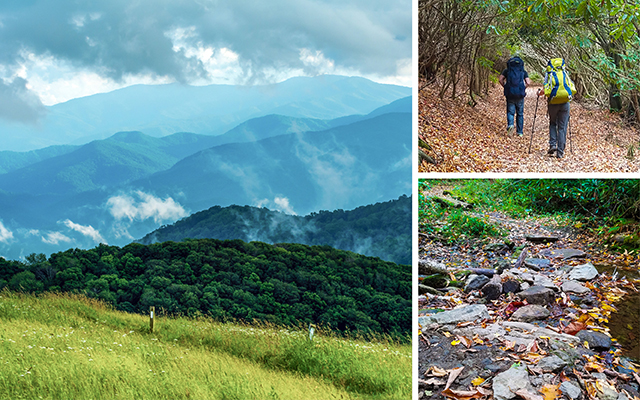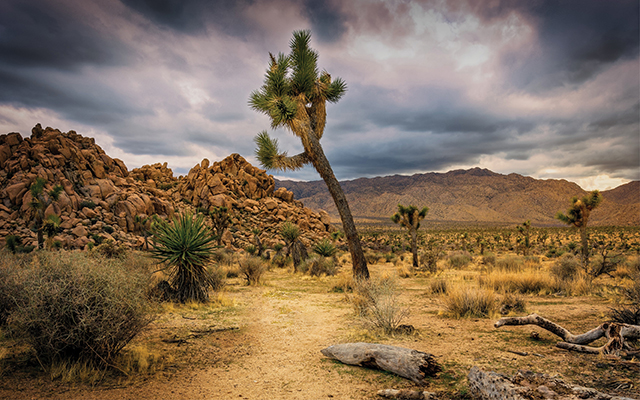As an Emerson College student, Andy Laub thought political reporting was going to be his career. “But after covering the 2008 presidential election, I became kind of jaded by it,” he recalls. “I got really burned out, and after the inauguration happened, I left to hike the Appalachian Trail.”
That thru-hike (walking the entirety of a long trail within a year) sparked Laub’s deep love for nature and a passion for sharing stories connected to it. The 32-year-old self-proclaimed “dirtbag journalist” has since ventured to the Mongolian steppe, Gulf of Maine fisheries, and Florida’s Everglades; along the way, he’s released six feature-length films. His work has aired on the Discovery Channel, National Geographic International, BBC World News, Hulu, and Amazon Prime.
“I was dissatisfied with a lot of the content being created around me,” he says. “There were no stories about getting nourishment from nature; it was all about people attempting to conquer it.”
Laub is devoted to creating content that shows humans communing with nature. As It Happens, which chronicles his 173-day journey with a friend traversing the entire Pacific Crest Trail, from Mexican deserts to snow-covered Canadian peaks, earned him a wide fan base.
He’s also partnered with other thru-hiking filmmakers, including Austrian Peter Hochhauser, creator of This Is Not a Beautiful Hiking Video.
Realizing a shared passion for filming journeys on long trails, Laub and Hochhauser decided to collaborate on a project.
Their 73-day trek along the challenging Pacific Northwest Trail is documented in THRU | The Pacific Northwest, which they hope inspires viewers to discover the benefits of long walks in nature. (Learn more at www.thrufilm.com.)
Experience Life | You’ve said that you were born while thru-hiking the Appalachian Trail. What was so life-altering about that experience?
Andy Laub | I grew up without any spiritual life. My mom’s parents were from Poland. They were stoic and pragmatic, with an approach to life of “go to work and support your family.” My dad’s side had a similar mentality. When I got older, I realized that there was something missing. I didn’t have a deeper context for anything outside my day-to-day bubble.
When I was on the Appalachian Trail, I discovered a part of myself that I had never known existed. That experience broke me out of my bubble and showed me I was part of something much larger than myself or the manmade world.
EL | Why do you hope that more people experience this rite of passage?
AL | I think the Western world is too comfortable, and a thru-hike gives you a lot of the tools for self-reliance and a deep appreciation for nature that writers like Thoreau and Emerson talk about.
It also opens you up to connecting with folks you would normally never meet. That experience shows you how people live and gives you a greater appreciation for the similarities and differences between people and cultures.
I think having these experiences as a base before you go and embark on your professional career is something that makes you better at what you do because you have a much larger context for the world in which you are operating.
EL | Thru-hiking with just the basic necessities is a big challenge, but you added gear to make a film. How did you manage that, and what is filming a thru-hike like?
AL | All of us packed as little as possible. For example, we didn’t each have our own tarp or tent, and we shared a cook pot. My pack weighed around 8 pounds before camera gear, and then I added around 10 pounds of production equipment. In the thru-hiker world, where you’re normally shaving grams and ounces, you have to be absolutely dedicated if you’re throwing in more gear than your pack weighs.
There’s certainly a physicality involved with just carrying that amount of gear, but filming a thru-hike is really this delicate balance of knowing when to be a fly on the wall and when to put on your journalist hat and dig a little deeper into the experience.
Sometimes I just wanted to film a conversation around a pot of noodles, but other times it was like, “OK, you know what, I think something’s going on with you today. Let’s set up the camera and document whatever is in your head right now.” Capturing the landscapes and beauty of these natural places is relatively easy compared with relaying a person’s mental landscape.
EL | What are some common mental or internal challenges of a thru-hike?
AL | It’s so different for everyone because everyone comes into a thru-hike with their own baggage that they need to assess, examine, and process. But I think most people kind of lean into that baggage, and instead of it being baggage, it’s more like a power bank or battery that you use in a positive way in your life after you’re finished. I think a lot of people go into long hikes to have that kind of processing opportunity and experience.
Another mental challenge is getting through the tedium. For the hike on the Pacific Northwest Trail, we averaged 20 miles a day, ascending an average of 3,000 feet per day. While that might sound adventurous, at its core it is actually a tedious, unpredictable traversing of wilderness. You have to have a certain mental capacity — and be able to grow that capacity — to make it through.
EL | There are numerous portraits in the media about solo thru-hiking experiences, but you like to backpack with other people. Why?
AL | I started the Appalachian Trail solo having never backpacked, but within the first week I met another thru-hiker — Ian Mangiardi — who had more experience than me. We wound up hiking the whole thing together. Later, we hiked the entire Pacific Crest Trail. So I’m used to hiking with people, and in a manner that we’re going to do this thing together and see it through to the end.
I’m also a social creature. I operate best in teams. Processing things on your own is enlightening, but there’s something to be said for being in a group where telling your team members stories about yourself is a whole other way of internally processing your own story.
There’s a profound aspect to what you find out about yourself when you’re spending that much time with people. The questions they ask you about your life are things you might never think of asking yourself, or are things you might just take for granted.
So, while being in a group for a whole hike is a bit of an anomaly in the thru-hiking world, I find that’s one of the most rewarding parts of these adventures — the friendships forged and tested inside wilderness.




This Post Has 0 Comments